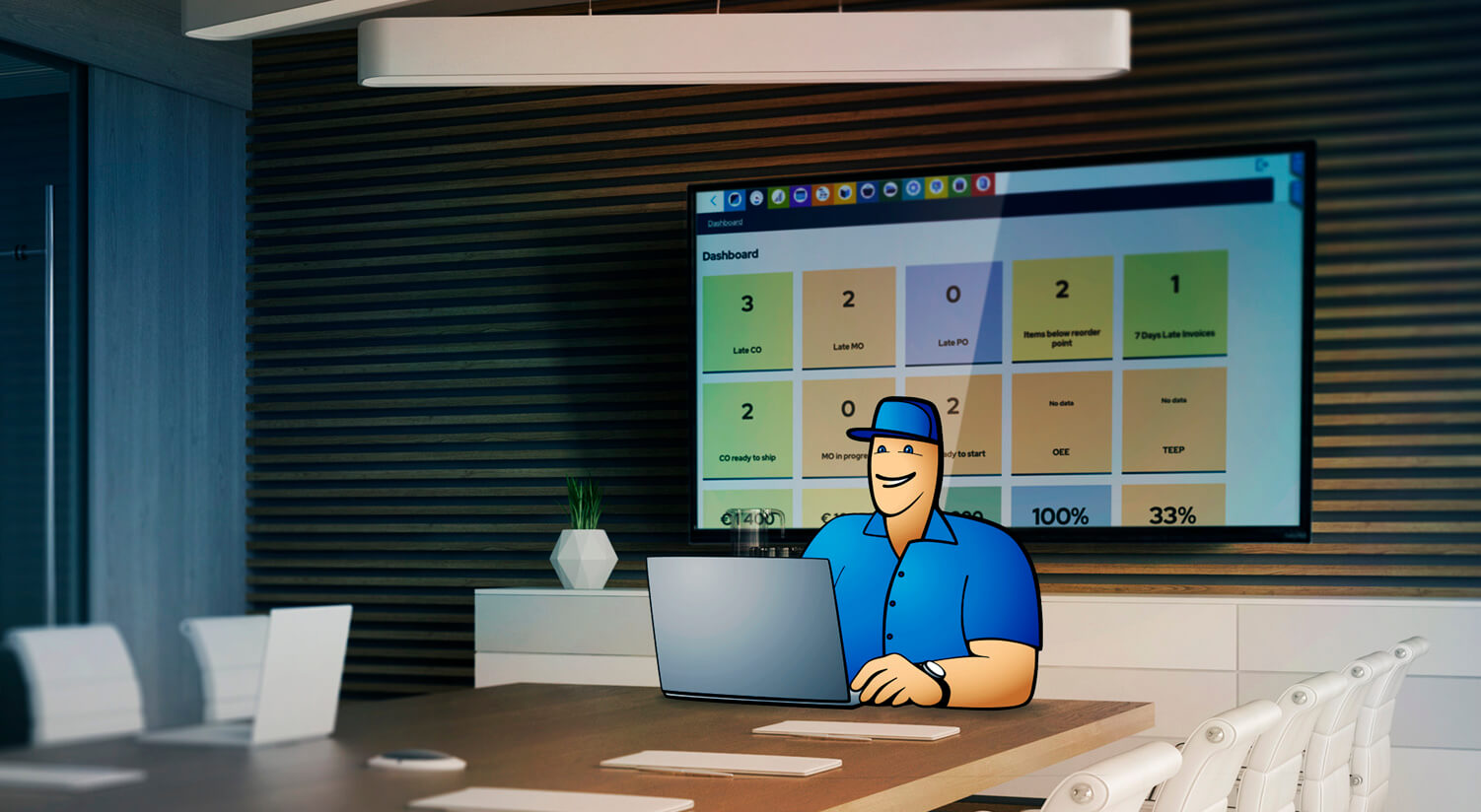ERP and MRP: The Best is Yet to Come
Given that the concepts behind Materials Requirement Planning are now around fifty years old, you might think that Enterprise Resource Planning (ERP) and its siblings would now count as ‘mature’. But in fact, ERP/MRP is only just getting started, and the best is yet to come.

Accelerating advances in IT and other technologies, and new business drivers, mean that ERP/MRP is finally shrugging off its image as “production scheduling with added bells and whistles” and finally doing what it says on the tin: planning, synchronising and optimising all the Resources across the Enterprise and beyond. This is transforming the scope and capabilities of systems as well as how users interact with them, in ways that are affordable and accessible to everyone from global corporates to start-ups.
Pandemic conditions have accelerated trends that were already evident in how users access and deploy ERP/MRP. Cloud-based systems are becoming dominant, removing constraints on data volumes, processing power and of course up-front investment requirements. The cloud also makes it easier to support ERP/MRP on the myriads of mobile devices that have become even more essential while ‘working from home’. User interfaces are more graphical, more intuitive, and designed around the limitations of the small screen; personalised dashboards highlight each user’s most important or most used applications and reports.
Voice recognition and natural language processing are being applied, potentially making interrogating the company’s core systems as easy as asking ‘Alexa’ or ‘Siri’.
All this means it is increasingly simple to share, discuss and work on the ‘single version of truth’ that ERP/MRP represents: for example, a self-isolating sales rep can share with a Working From Home customer graphic representations of options for scheduling a preferred order.
Systems are increasingly customer-centric: flexible packages that meet customers’ real needs, rather than those of a designer’s theoretical corporate model. Another emerging trend is of ‘two-tier’ ERP/MRP, whereby a ‘full fat’ corporate ERP/MRP system sits over many slimmer, more targeted, mission-specific programmes serving individual operating divisions or functions. That approach could also be extended to smaller companies with large, dominant customers – for example where the smaller supplier is a buy-out of a larger corporate’s operation.
New technologies are greatly extending ERP/MRP capabilities, vastly increasing the quantity and quality of data available, which thanks to advances in computational power and clever IT science can be processed and worked on in near-real-time – how different from the recent past when an MRP run was left to process over the weekend. The Industrial Internet of Things (IIoT) continuously updates on the location and condition of goods and assets and the operating parameters of machines and processes; comparable feeds from e-commerce platforms similarly update commercial aspects; and all without costly and error-prone manual data entry.
And there is so much more that ERP/MRP and its allied systems can now do with all this data. Artificial Intelligence and Machine Learning, working with other technologies such as vision systems, open new potential for ERP/MRP.
AI and ML are also helping power predictive analytics. IoT sensors monitoring machine performance can predict degradation and forecast failure: through the ERP/MRP system, spares can be pre-ordered and maintenance scheduled, reliably increasing up-time. Predictive analytics also have obvious uses in improving demand forecasting. Here, as in other applications, hard data is increasingly supplemented by what may broadly be termed ‘business intelligence’, itself generated by the application of AI to anything relevant, from weather forecasts to commodity prices (and, increasingly, social media activity).
Business Intelligence, of course, extends the range of inputs to ERP/MRP well beyond manufacturing, or indeed the four walls of the enterprise. The interactions and outputs from ERP/MRP are similarly extending to cover all resources, internal and external, and physical, financial or informational. It is already commonplace, indeed vital, to use ERP/MRP to link production to human resources and to customer relations management. Increasingly, the firm’s own ERP/MRP will be interacting directly, even autonomously, with external systems.
The obvious case is logistics, where the availability of third-party transport, warehousing, casual labour, fulfilment services is as important a factor as the firm’s own internal resources in determining how, for example, to fulfil a seasonal demand peak. But the same can be said of marketing and many other external resources. The ERP/MRP system becomes not just a user of Business Intelligence, but a source of BI for the wider enterprise.
But perhaps the most significant integration is the most obvious – with finance. Detailed real-time data can now be secured for everything relating to an order, from labour to transport, from material wastage to machine wear and tear: no more ‘standard’ charges and arbitrary overhead apportionments. Firms can see the profitability of an order, not just the gross margin. Perhaps even more importantly for smaller firms, they can see the impact of alternative production schedules on cash flow.
So ERP/MRP has finally outgrown its roots as a purely manufacturing tool. Fast, flexible and affordable, it forms the architecture of the enterprise and the key to sustainable profitability, regardless of company size. Not all of these developments are yet widely available, and not all will be relevant to every company, but any firm contemplating an ERP/MRP installation should be aware not only of the very real current benefits, but of the exciting new opportunities that will open up in the future.
First published in Manufacturing & Logistics IT.





